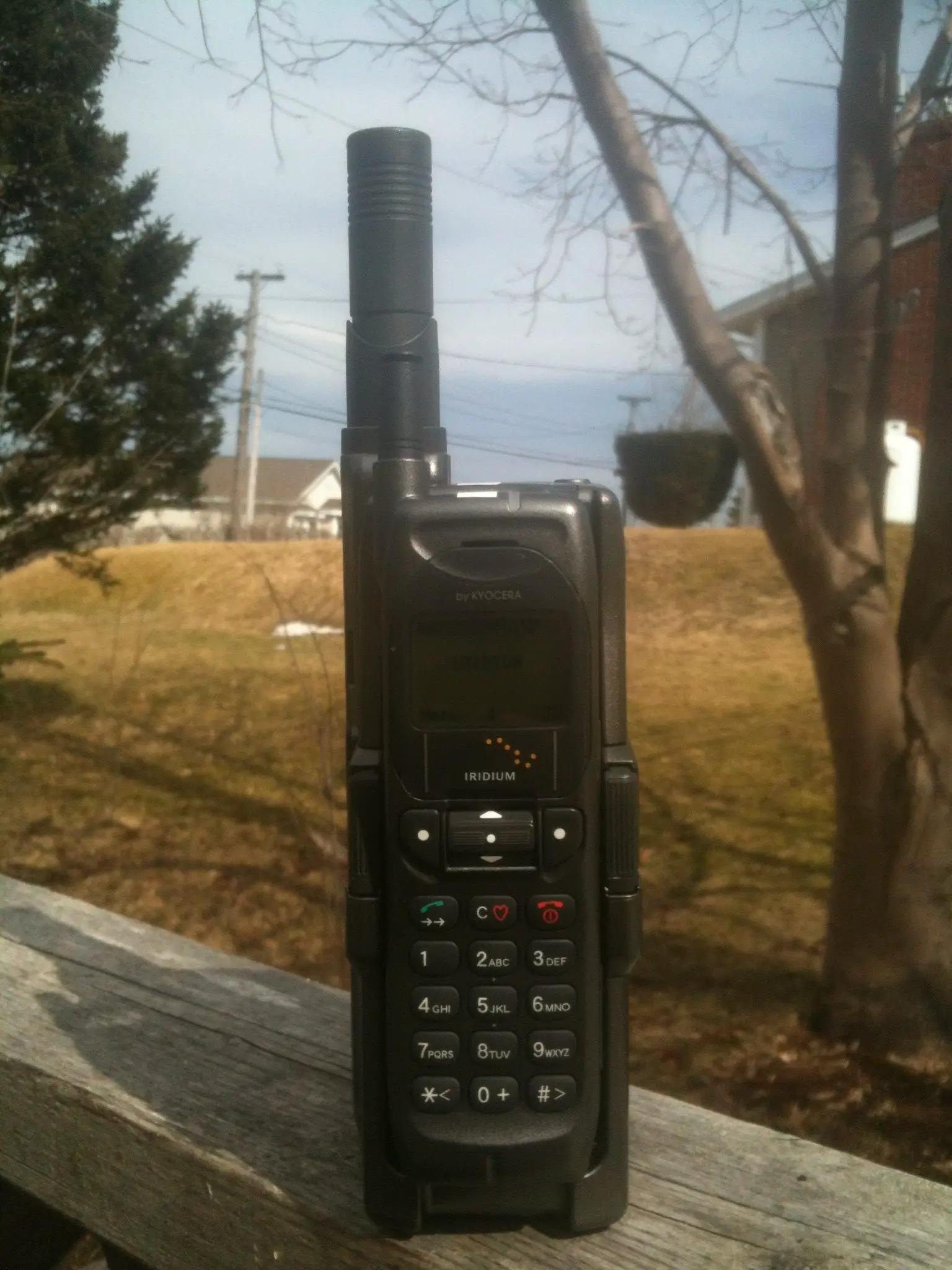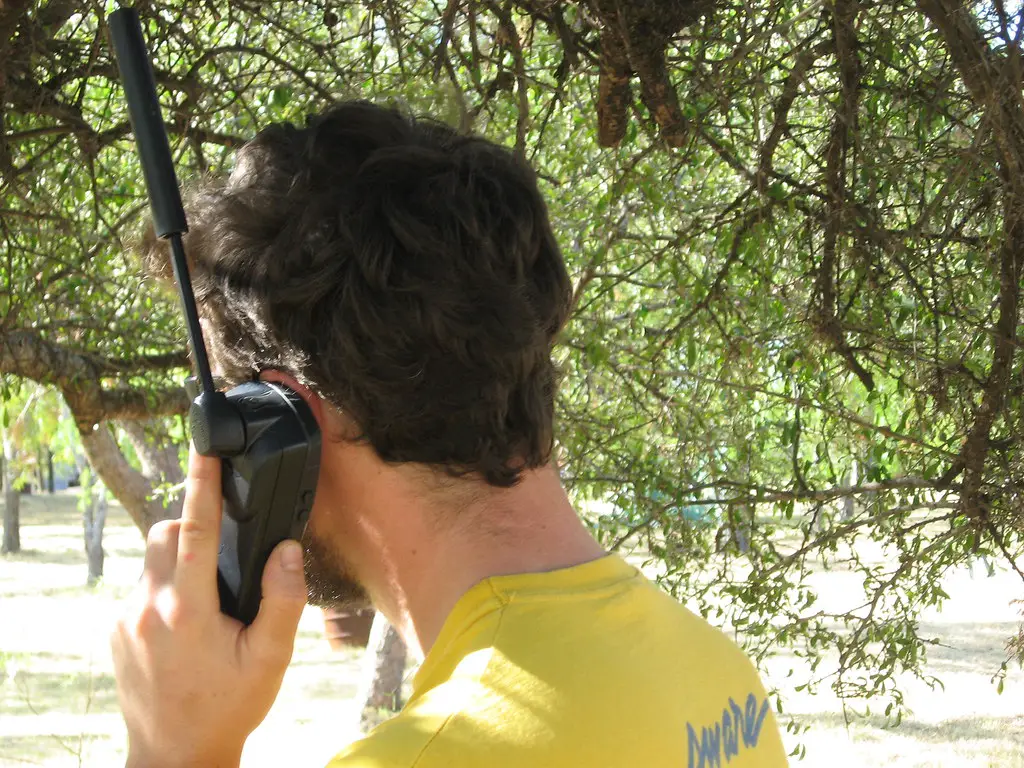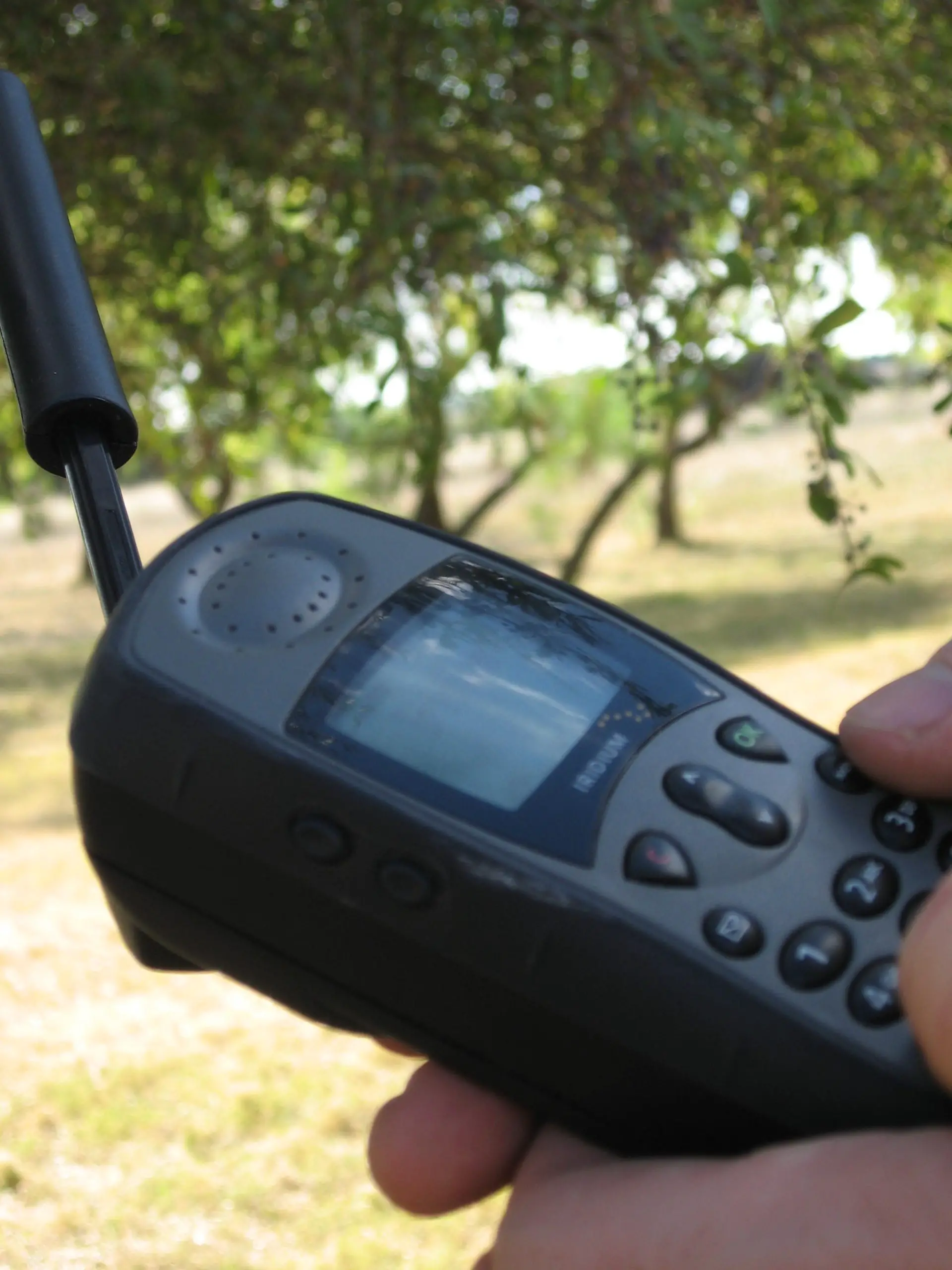Satellite phones have long been fascinating and mysterious. Can they be tracked? Yes! But it’s complex and requires advanced tech.
GPS satellites orbiting Earth transmit signals to receivers on the ground, which can calculate precise locations. By intercepting these signals, tracking a satellite phone is possible.
However, permission is required from the service provider or government agencies. Encryption technology makes unauthorized tracking more difficult.
One main reason for tracking satellite phones is to help with search and rescue in remote areas or emergency situations. This way, authorities can more easily locate people who need help.
What is a Satellite Phone?
A satellite phone, also known as a satphone, is a communication device that uses satellites to connect. It’s often used in places where cellular networks aren’t available or are unreliable. It works by sending signals to satellites orbiting the Earth which then send them to other satphones or ground stations.
- You can use satphones anywhere on the planet.
- They’re tough and built for harsh environments, so they’re ideal for outdoor activities or emergencies.
- You don’t need any infrastructure on the ground to use them.
- Satphones don’t rely on existing cellular networks and have their own numbers.
- They’re pricier than regular cell phones but offer reliability in remote areas.
It’s worth noting that satphones can be tracked in certain conditions. For example, if someone is using one in an area with GPS or other tracking systems, they can be located. Also, authorities may be able to track them during investigations or emergencies.
One such story is about a hiker who got lost in a remote mountain range. He had no cell service, but his satphone enabled him to call for help. Rescuers were able to find him thanks to the phone’s tracking capabilities. This shows how vital satphones can be in emergency cases and that they can be tracked for lifesaving purposes.
Satphones are transforming communication in far away places. They provide global coverage and reliable connection, but it’s important to be aware that their use could be monitored in some instances. Whether for outdoor activities or emergencies, satphones are a lifeline when other options are unavailable.
How Satellite Phones Work
Satellite phones are a must-have for communication in far-off places. They connect with orbiting satellites, letting users make calls from any point on the planet. Let’s look into how they work!
| How Satellite Phones Work |
|---|
| Connect to Satellites |
| Overcoming Obstacles |
| Call Routing |
Satellite phones link up with satellites in space. These are like relays, sending signals between the phone and the person they’re calling. This way, people can stay in touch from anywhere, as long as they can see the sky.
These phones can face obstacles that other phones can’t. Cell towers can’t pass through hills or thick forests, but satellites manage it. So, they get round these issues easily.
Call routing is a big part of the process too. When making a call, the phone connects to the nearest satellite. Then, it passes the signal through other satellites until it reaches its destination. That way, people can talk even from great distances!
Can Satellite Phones Be Tracked?
Satellite Phone Tracking: An Informative Analysis
Satellite phones are not immune to tracking. They can indeed be tracked using various technologies and techniques. Here, we delve into the world of satellite phone tracking to understand the capabilities and limitations of this process.
To further explore the topic of satellite phone tracking, let’s examine the following table:
| Tracking Capability | Tracking Method | Reliability | Limitations |
|---|---|---|---|
| GPS Tracking | Global Positioning System (GPS) | High | Requires clear line of sight to satellites |
| Cellular Tracking | Cell towers | Medium | Limited coverage in remote areas |
| Satellite Network Tracking | Satellite network infrastructure | High | Dependent on satellite coverage |
As we can see from the table, satellite phones can be tracked through different methods. GPS tracking, the most reliable method, relies on the Global Positioning System to determine the phone’s exact location. However, it requires an unobstructed view of the satellites, making it less effective in densely populated or heavily forested areas.
Another method involves tracking through cell towers. This method is less effective than GPS tracking as it relies on the availability of cell towers. In remote locations with limited cellular infrastructure, tracking becomes unreliable.
Satellite network tracking, on the other hand, is a highly reliable method that utilizes the satellite network infrastructure itself. This method enables tracking even in areas without cellular coverage, as long as the satellite network is accessible.
In addition to these tracking methods, it is important to note that satellite phone users can also enable or disable location-tracking features on their devices. This gives users control over whether their phones can be tracked or not, adding an extra layer of privacy.
It is worth mentioning that the information presented here is based on research and industry knowledge. Satellite phone tracking technologies and capabilities may vary depending on the specific device and service provider.
In a similar vein, it is interesting to note that satellite phones have played a vital role in emergency situations and remote expeditions. For instance, during natural disasters or remote explorations, satellite phones provide a critical means of communication. (Source: NASA)
GPS: Helping you navigate the world and helping others track your embarrassing search history.
Understanding GPS Tracking
GPS tracking is a must-have technology for the precise location of persons or things. Here are 6 points to remember:
- It operates using a network of satellites that revolve around the Earth.
- These satellites emit signals that GPS devices pick up.
- Timing the signals helps receivers figure out their exact location.
- Different industries use GPS tracking for efficient fleet management and route planning.
- In emergencies, it is invaluable in quickly locating missing persons or vehicles.
Furthermore, GPS tracking has some awesome features. Real-time tracking allows users to keep track of an object’s movements. Plus, some devices come with maps and navigation functions that help reach destinations quickly.
Pro Tip: For more reliable results in areas with weak satellite signals, choose devices with better satellite connectivity.
Tracking Options for Satellite Phones
Satellite phones provide various tracking methods to ensure user safety and security. These include GPS tracking, beacon tech, and network registration. See the table for details.
Plus, encryption features protect user privacy when tracking activities are done. All these options give a complete solution for tracking satellite phone users in different situations.
It’s a fact! BBC News reported that satellite phone tracking was vital in finding lost hikers in remote areas.
How to Track a Satellite Phone
- Obtain the satellite phone’s unique identifier, known as the International Mobile Equipment Identity (IMEI) number.
- Access a satellite phone tracking service or software that can interface with the satellite network.
- Enter the IMEI number into the tracking service or software.
- The tracking system will send signals to the satellite phone, establishing communication and determining its location.
- The satellite phone will respond to the tracking signals, providing location information to the tracking service or software.
- The tracking service or software will display the satellite phone’s location on a map or provide coordinates indicating its whereabouts.
It is important to note that satellite phone tracking may require permission or authorization, depending on the jurisdiction and circumstances. Additionally, the accuracy of satellite phone tracking can vary based on factors such as atmospheric conditions and the availability of satellite coverage.
A unique feature of satellite phone tracking is its ability to provide location information in remote areas and areas without traditional cellular coverage. This makes satellite phones an essential tool for individuals and organizations operating in remote or challenging environments.
True fact: GPS is a key technology used in satellite phone tracking systems, providing accurate positioning information. (Source: SatellitePhoneStore.com)
Using GPS tracking services to locate a satellite phone is like using a compass to navigate through a maze made out of jello – it’s a sticky situation.
Using GPS Tracking Services
Satellite phones are vital for communication in isolated places. GPS tracking services can increase the usefulness and security of these devices. Here’s how it works:
- Register for a dependable GPS tracking service. They provide real-time info about the location of your satellite phone.
- You will get a unique ID code for your device. This code allows the tracking system to detect your satellite phone.
- Through the GPS tracking service’s platform, you can view your phone’s current location on a map. This is handy in emergency times or when travelling in unfamiliar areas.
- A few GPS services offer extra features, for instance, geofencing. This allows you to set virtual boundaries and receive alerts if your device exits the allocated area.
GPS tracking services give you details about the whereabouts of a satellite phone. But remember, these services need an active internet connection or cellular coverage. In places with limited connectivity, alternative methods such as satellite-based tracking systems could be more suitable.
A notable example of GPS tracking services helping to find a satellite phone was during a mountaineering journey. A group of climbers encountered unanticipated weather and got separated. One of them had a satellite phone with a GPS tracker connected to a central monitoring station.
The tracking service provided GPS coordinates. Search and rescue teams located the stranded climber in a few hours. Without this technology, finding them would have been difficult and dangerous.
Contacting the Satellite Phone Provider
Be prepared! Have your satellite phone serial number, service plan details, and related documentation on hand for a smooth communication experience. Response times may differ, depending on provider availability and workload. Check their business hours to plan and receive assistance in a timely manner.
Here’s an example: In 1998, during an Antarctic expedition, a research team had to rely on their satellite phone. Thanks to their intelligence and knowledge of how to reach out to the provider, they were able to establish a connection and get help in record time. So, be ready with the right info and be aware of provider hours to get help swiftly.
Privacy and Security Concerns
Satellite phones raise several concerns regarding privacy and security. First, since these phones rely on satellite signals, they can be tracked by governments, law enforcement agencies, and other authorized entities. This raises concerns about the potential invasion of privacy and the misuse of personal information.
Second, the use of satellite phones in remote or sensitive areas can attract unwanted attention, making users vulnerable to surveillance or monitoring by unauthorized individuals. This poses a significant security risk, especially in situations where confidentiality and secrecy are crucial.
Third, satellite phone communication is not completely secure, as there have been instances of calls being intercepted or intercepted. This highlights the need for additional measures to protect sensitive information exchanged over these devices.
Lastly, satellite phones are susceptible to hacking or unauthorized access, which can compromise the privacy and security of the users. Hackers can potentially gain access to call logs, messages, and other personal data stored on the device, exposing individuals to identity theft or other malicious activities.
It is important to be aware of these privacy and security concerns associated with satellite phones and take appropriate measures to safeguard personal information and ensure secure communication. However, despite these concerns, satellite phones remain a vital tool for communication in remote and isolated areas.
A true fact related to the topic is that the Federal Communications Commission (FCC) requires satellite phone service providers to maintain records of customers’ call detail records for at least two years. This is to facilitate lawful interception requests by authorized entities.
Because who needs privacy when you can have the NSA and aliens on the line with a satellite phone?
Steps to Ensure Privacy
Privacy and security are key in today’s digital age. To avoid risks such as identity theft, data breaches, and unauthorized access, it’s essential to protect your personal information online. Here are some steps to help:
- Passwords: Create complex passwords for all accounts. Use a mix of letters, numbers, and special characters. Don’t use guessable details like birthdays or names.
- Two-Factor Authentication (2FA): Enable 2FA when possible. This adds an extra layer of security with a text or app notification.
- Software Updates: Keep all devices and software up-to-date. This helps protect against known and emerging threats.
- Public Wi-Fi: Be careful when using public Wi-Fi. Don’t access sensitive information unless necessary. Public networks are vulnerable to hackers.
- Privacy Settings: Regularly review the privacy settings on your accounts, apps, and devices. Customize these settings to limit what is shared.
Be aware of phishing scams and suspicious emails. Always verify the source before providing any details. Companies have mishandled users’ private data due to lax security measures. Prioritize security to ensure a safer experience.
Protecting Against Unauthorized Tracking
Preserving our privacy and safety online is crucial in this digital age. Unapproved tracking carries a huge threat to our personal details and can lead to multiple privacy infringements. Luckily, there are steps we can take to secure ourselves against such tracking.
Using Virtual Private Networks (VPNs) is one successful way to shield from unauthorized tracking. VPNs construct a secure and encrypted connection between our devices and the internet, making it hard for third parties to track our online activities. By routing our internet traffic through different servers around the world, VPNs help keep our identity hidden while browsing the web.
Another method is to frequently erase browser cookies and cache. These tiny files stored on our devices allow websites to remember our preferences and give us a personalized experience. But they can also be used by companies for tracking. By regularly deleting cookies and clearing cache, we can lower the amount of data available for tracking, and strengthen our online privacy.
It is worth noting that some browsers offer built-in features to block or limit particular types of tracking. For instance, popular browsers such as Mozilla Firefox and Google Chrome provide options to stop cross-site tracking and block third-party cookies. Taking advantage of these features adds an extra layer of protection from unauthorized tracking.
A real-life incident shows the importance of defending against unauthorized tracking. In 2018, a popular social media platform was heavily criticized when it was discovered that it had unlawfully shared user data with third-party companies without permission. This incident served as a warning for many people about the importance of protecting their personal information from unauthorized access.
Conclusion
Exploring satellite phone tracking, we found out it’s possible! But not as easy as it seems. Signals can be intercepted and traced back to their source. To track a satellite phone, special tech know-how and equipment are needed.
Legal matters must be considered too. Tracking a satellite phone without permission is illegal in many countries. Intercepting signals and accessing personal info are included.
We must stay informed on this intriguing topic. Protect yourself from legal troubles. Let’s use this tool with caution and respect for privacy laws. Ignorance should not stop us from taking full advantage of this great tool!
Frequently Asked Questions
Q: Can a satellite phone be tracked?
A: Yes, satellite phones can be tracked. They emit signals that can be detected and located by satellite tracking systems.
Q: How can a satellite phone be tracked?
A: Satellite phones can be tracked using GPS (Global Positioning System) or other satellite-based tracking systems. These systems receive signals from the satellite phone and determine its location.
Q: Who can track a satellite phone?
A: Tracking a satellite phone typically requires specialized equipment and access to satellite tracking systems. Government organizations, telecommunications companies, and certain authorized individuals or entities may have the capability to track satellite phones.
Q: Can satellite phones be tracked in remote or rural areas?
A: Yes, satellite phones can be tracked even in remote or rural areas. As long as there is satellite coverage, tracking systems can receive signals from the satellite phone and determine its location.
Q: Can satellite phone tracking be disabled?
A: In general, it is not possible for a user to disable satellite phone tracking. Tracking is an inherent feature of satellite phones to ensure safety, emergency response, and accountability.
Q: Is it legal to track someone’s satellite phone?
A: The legality of tracking someone’s satellite phone depends on various factors, including jurisdiction and the purpose of tracking. In some cases, tracking may require proper authorization or a court order. Laws regarding satellite phone tracking can vary between countries.





